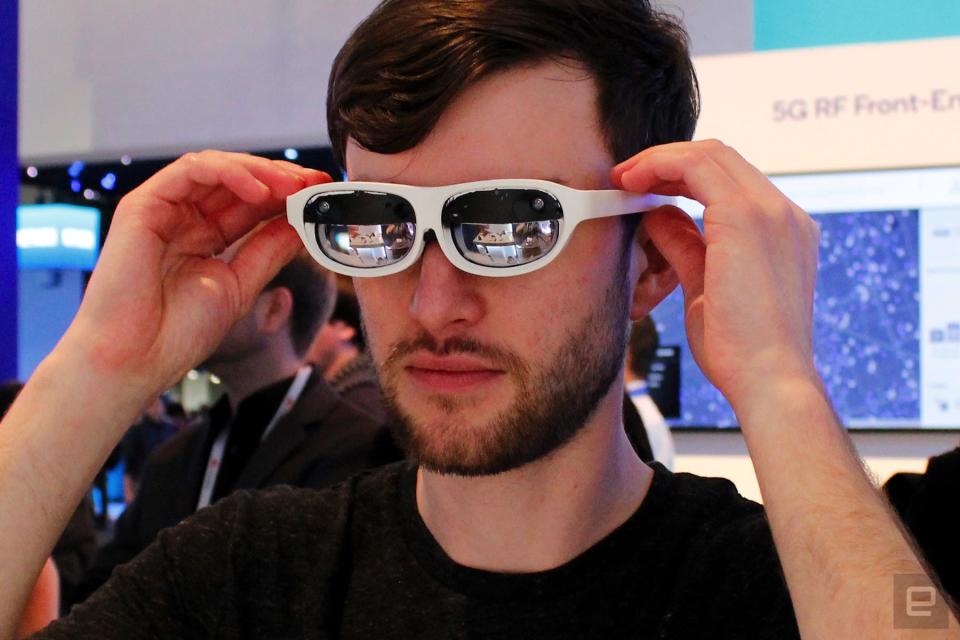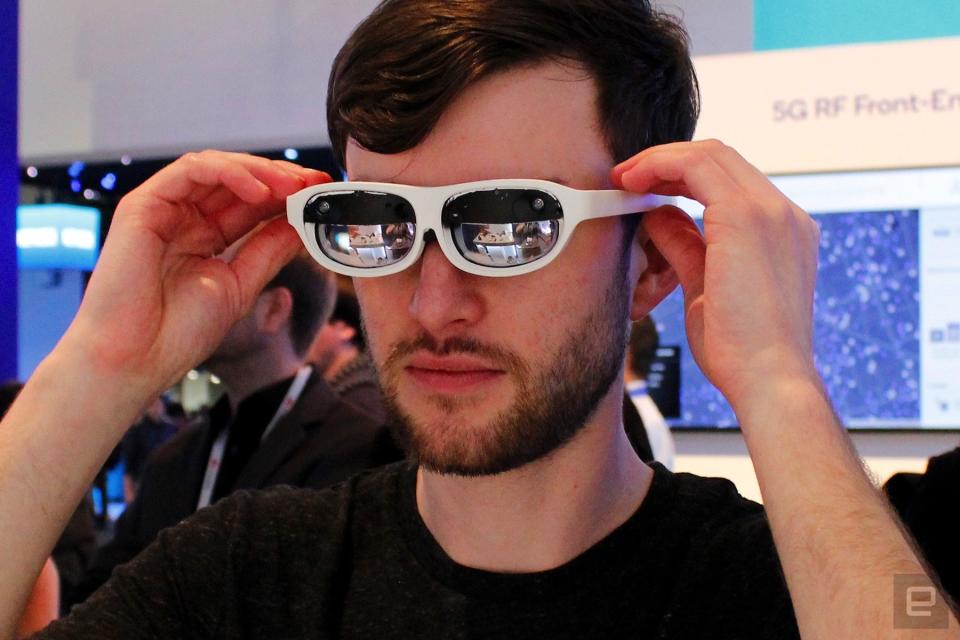Nreal's mixed reality glasses can be powered by a 5G phone
The handset replaces a dedicated computing unit called Toast.
Can 'mixed reality' glasses ever go mainstream? Nreal certainly thinks so. The company is pushing ahead with Light, a pair of "ready-to-wear" spectacles that project immersive videos, games and characters into your field of vision. Back at CES, we used the glasses while they were attached to a small, clip-on computing unit called 'Toast' (apparently it looks like a toaster?) Now, the company is showing how the smart glasses can work with a 5G-enabled, Qualcomm Snapdragon 855-powered smartphone instead. That means, in theory, the company can offer a cheaper Light at launch that doesn't require you to carry an extra gadget in your pocket.
Deep in the bowels of Mobile World Congress, I got the chance to slip on a pair and try some early demos. As my colleague Richard Lai noted, they're heavier and less discrete than most sunglasses. They are, however, dramatically lighter and less conspicuous than high-end mixed reality headsets such as the Magic Leap One and newly-announced HoloLens 2. I wouldn't be comfortable wearing these in public -- they look comically large on my British babyface -- but they have more style than 90 percent of the bulky and quite frankly terrible AR glasses that I see at CES every year.
The design is also impressive considering it houses 1080p laser projectors, capable of 60 frames per second, for each eye. I spent a few minutes watching a soccer game between Roma and Barcelona in the International Champions Cup. The video was totally watchable -- the image was sharp and there was no discernible buffering. I could, however, see the edges of the virtual 'window' in my peripheral vision. It didn't ruin the experience but meant I had to step back occasionally to squeeze everything in. That's fine in a private space but potentially awkward on a crowded bus or train.
During my demo I also watched some 3D holographic characters. These included an adorable cat, two samurai warriors and three dancers made from a watery substance. None of them were particularly detailed -- they reminded me of the holographic chess pieces in Star Wars: A New Hope -- but kept me amused for a few moments. I then used the round, puck-like controller to close the application and, with a virtual pointer, open some movie trailers that included Ready Player One and Avengers: Infinity War.
I wish the Light didn't need a wire connecting the glasses to a compatible smartphone or Toast. The alternative, I suppose, is a heavier and uglier wearable that has all of the processing power inside the frame. On balance, Nreal is probably taking the right approach. Eventually, I hope, the industry will nail a pair of smart specs that are indistinguishable from Ray Bans. The North Focals come close, but they're a different category of smart glasses -- one that's closer to Google Glass, rather than a full-blown AR experience like Magic Leap One. For now, I'll just have to be patient.


























